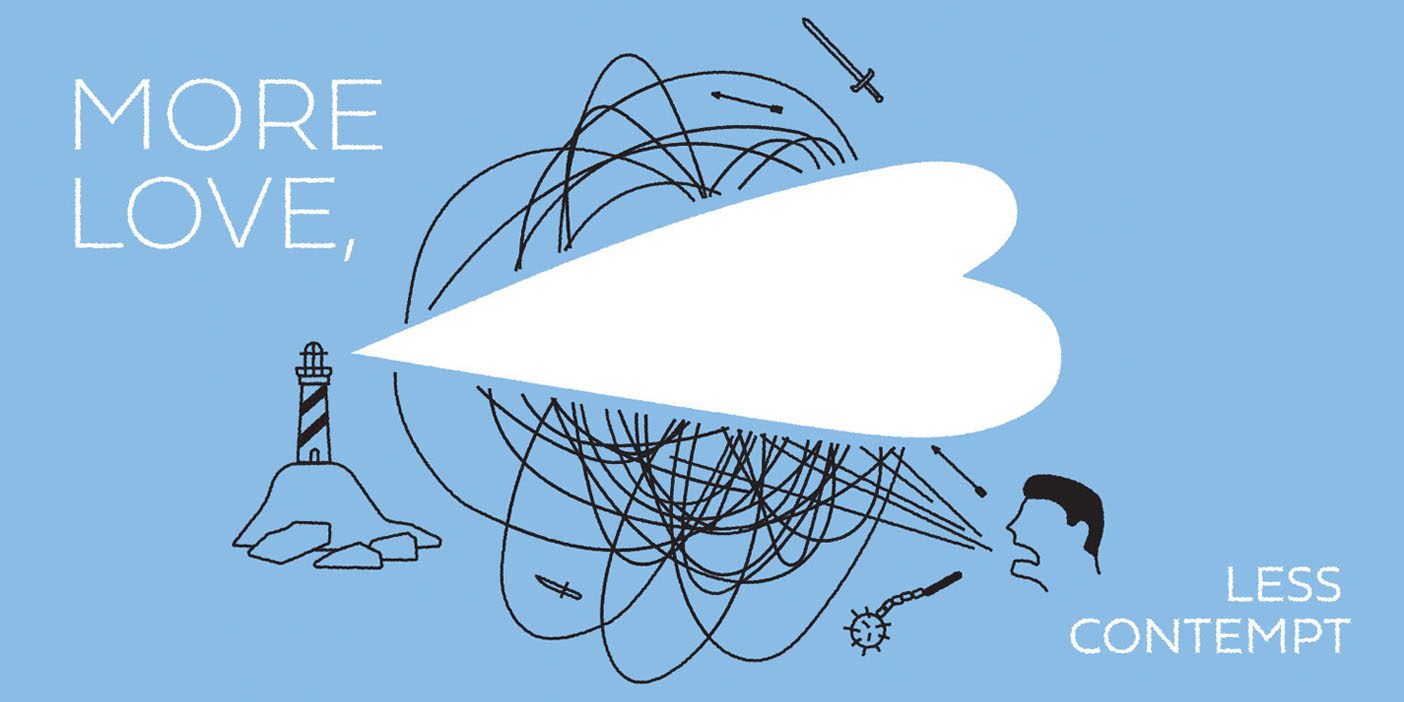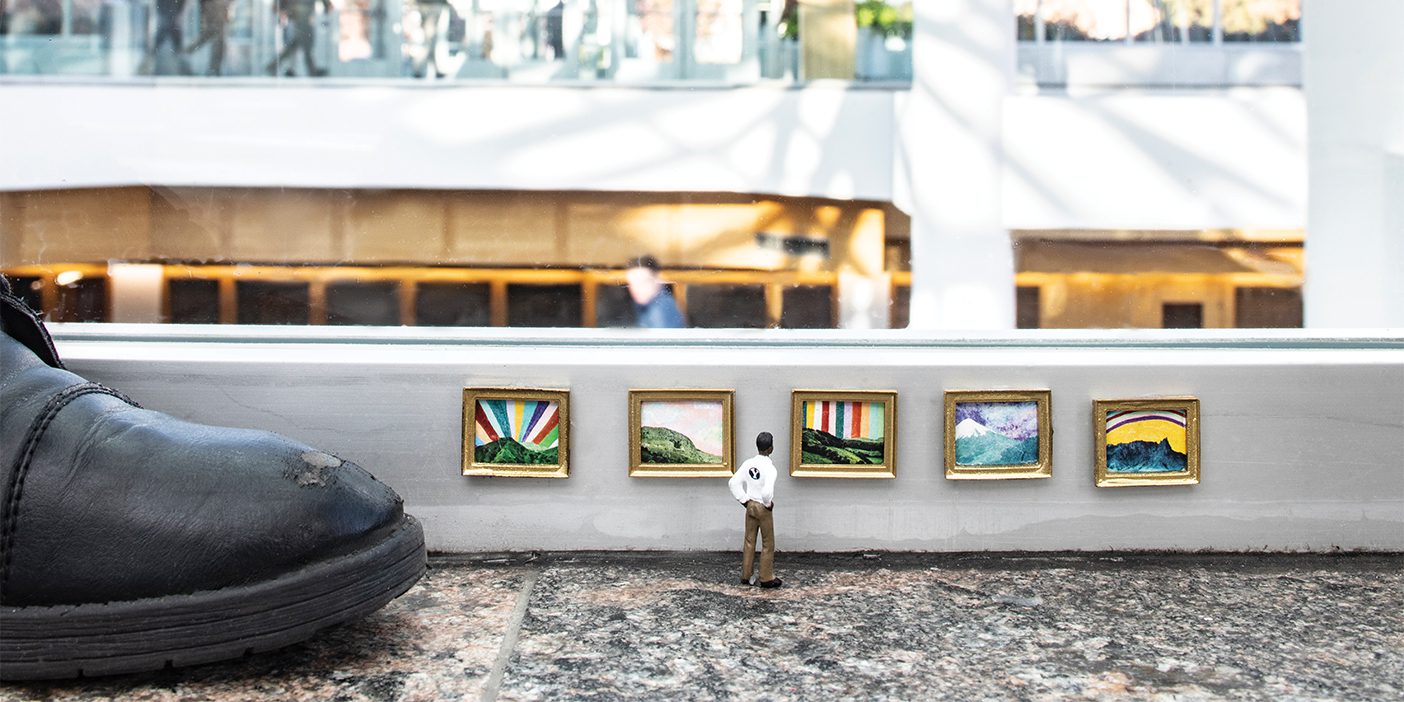Seeing Each Other Deeply
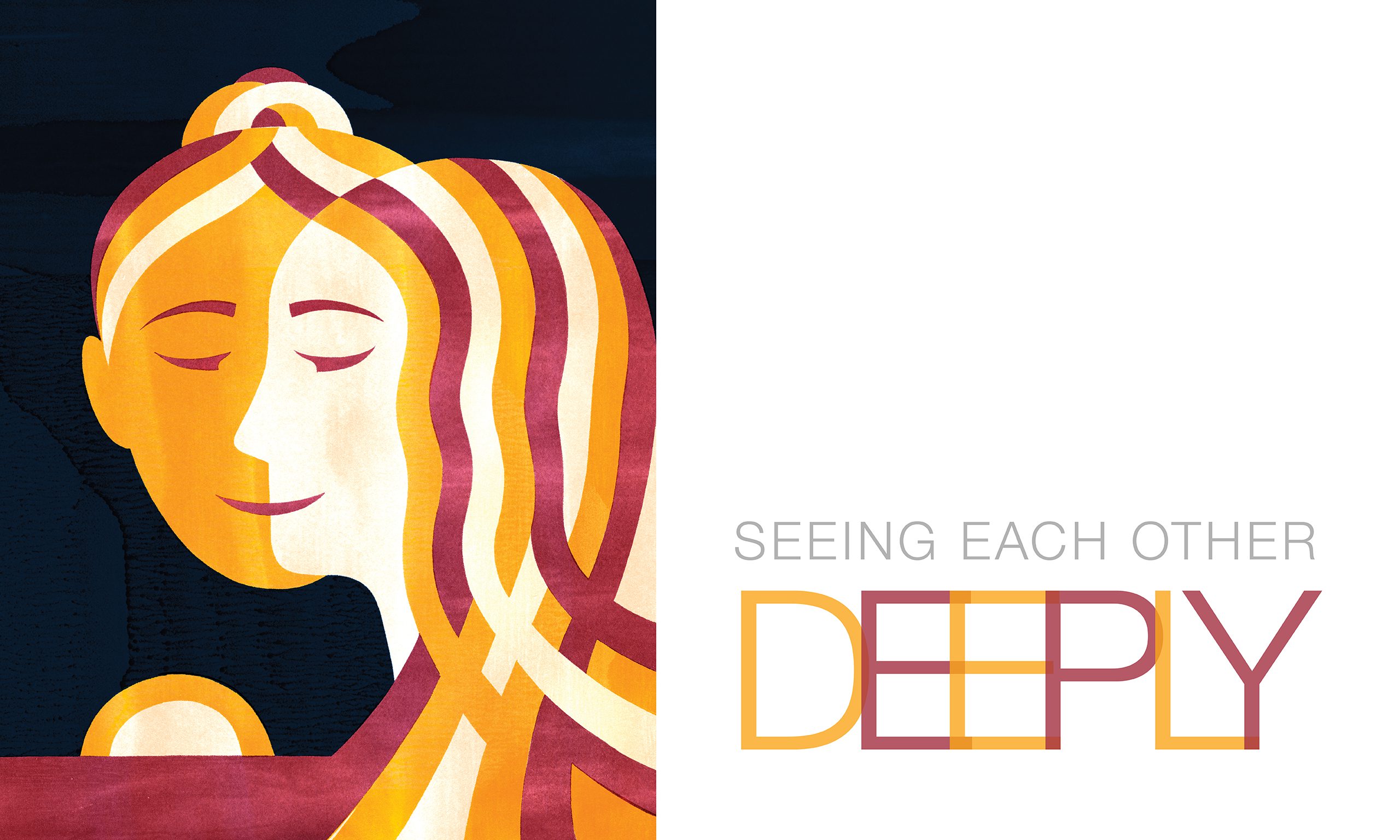
The merger of self—forgetting where you end and something else begins—can take you beyond happiness to joy.
By David Brooks in the Winter 2020 Issue
Illustrations by Alex Nabaum
We have entered an age of bad generalization. We don’t see each other well. We do not see the heart and soul of each person, only a bunch of bad labels. To me, this is the core problem that our democratic character is faced with. Many of our society’s great problems flow from people not feeling seen and known: Blacks feeling that their daily experience is not understood by whites. Rural people not feeling seen by coastal elites. Depressed young people not feeling understood by anyone. People across the political divides getting angry with one another and feeling incomprehension. Employees feeling invisible at work. Husbands and wives living in broken marriages, realizing that the person who should know them best actually has no clue.
We all have to get a little better at seeing each other deeply and being deeply seen. It is a question of epistemology, of understanding each other. John Ruskin, one of my heroes, said:
The greatest thing a human soul ever does in this world is to see something, and tell what it saw in a plain way. Hundreds of people can talk for one who can think, but thousands can think for one who can see.¹
There is one skill at the center of any healthy family, company, classroom, community, university, or nation: the ability to see someone else deeply, to know another person profoundly, to make them feel heard and understood.
What is this skill? How do you get good at it? It is not a detached intellectual skill; it is an emotional form of knowing. Our master here is Saint Augustine, who said that knowledge is a form of love.² Love is a focus of attention. Love is a motivational state to learn more about another. Love is a drive to move in harmony with another.
Lies of the Meritocracy
When you walk through the career side of life, you walk with a certain set of values. We take kids who start with the intensity of life and feed them into the college-admissions process, which teaches them that status and achievement are at the core of life. Then they get out and lead the kind of life that I led, which was a life in the meritocracy, trying to make it, trying to achieve, trying to contribute, and trying to build up an identity.
This meritocracy does give us a lot of achievement. But there are things in the meritocracy that, if you take unadulterated with no other moral system, are actually lies. The first lie of the meritocracy is that career success makes you happy. I am the poster child for that not being true.
The second lie of the meritocracy is the lie of self-sufficiency—that you can make yourself happy, that if you can win one more victory, lose 15 pounds, or get really good at yoga, you will be happy. If you ask people at the end of their lives what made them happy, it was not self-sufficiency; it was the moments when they were utterly dependent on somebody else and somebody else was utterly dependent on them.
The third lie is that life is an individual journey. We buy kids this book called Oh, the Places You’ll Go! by Dr. Seuss. In that book there is an individual kid, graduated from college, and his life is a series of experiences on the way up to success. He has no friends, he has no relationships, and he has no connections, because we think of life as an individual journey.
The fourth lie is that you can create your own truth—that you have to come up with your own worldview; that truth is not something outside of you, locked into the natural order of the universe. If you tell people that they have to create their own truth, very often they will not be able to do that.
There are more lies of the meritocracy: The culture of the meritocracy is that you are what you accomplish and that you earn dignity and respect by attaching yourself to prestigious brands. The emotion of the meritocracy is conditional love: you earn your way to be loved. The anthropology of the meritocracy is that you are not a soul to be saved, you are a set of skills to be maximized. And the big lie at the head of the meritocracy that is really corrosive is that people who have achieved more are worth more than other people. If you want to tear apart your society, that is a good lie to introduce. Our society does a reasonably good job of taking off the moral lens and helping us see life through an economic lens, making us more morally numb.
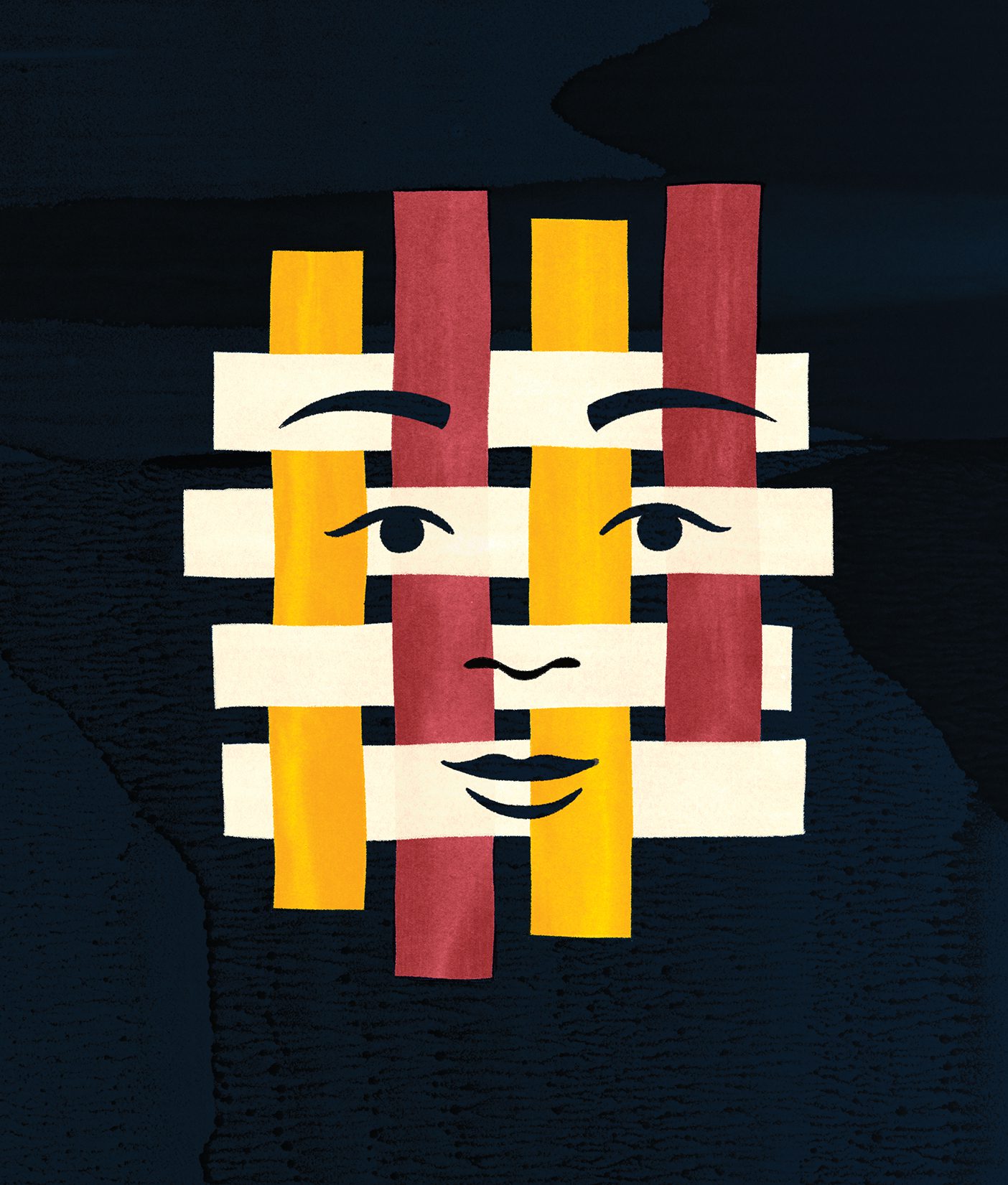
That is certainly what happened in my life over the course of achieving far more career success than I ever thought I would. I was writing, and writing is a lonely profession. And then when I succeeded, I found out it was lonelier still. For my book The Road to Character, I was on tour for 99 consecutive days, and I ate 42 consecutive meals alone at an airport, on an airplane, or in a hotel.
In the course of a career, just by drifting along and paying too much attention to the lies, you come to desire the wrong things. You desire reputation, and you come to idolize time. You value productivity over people. Instead of settling into deep relationships with people, you always have a clock in your head: “Oh, I’ve got to do this, I’ve got to do that.” You sort of glide through people.
In 2013 my kids had left home or were leaving home for college. My marriage had ended. My friendships were in the conservative movement, and I wasn’t part of that movement anymore. I was living alone in an apartment, not having anybody over, trying to work my way through it. Workaholism is a very good way to avoid any spiritual and emotional problems.
Because I wasn’t having people over, if you went to my kitchen and opened the drawer, where there should have been silverware, there was just Post-It notes. If you opened the drawer where there should have been plates, there was just stationery. I was just working. I was suffering the logical end of the cultural meritocracy, which is to be detached from other people—a lone monad on the way up.
As I was suffering from this, a lot of other people were too: 35 percent of Americans over 45 say they are chronically lonely. The largest-growing religious category is unaffiliated. The largest-growing political movement is unaffiliated. Since 1999 the suicide rate is up 30 percent. Since 2011 the teenage suicide rate is up 70 percent. College depression rates have doubled in the last 10 years. There are a lot of people who are very lonely, isolated, and afraid. And part of it is the culture of the meritocracy.
Weavers
I have tried to study people who are really good at seeing you and knowing you and making you feel known. I have this interaction at the Aspen Institute called Weave the Social Fabric Project. We go around the country and look at people who are great at building communities or greater relationships. We call them weavers.
One of the things weavers do is plant themselves down somewhere. They are not from anywhere; they are not cosmopolitans. They have picked one spot of ground that they really care about, and they know where they are from. They know who their people are. They are rooted.
There is a woman I met named Aiesha Butler. Aiesha was living in Englewood, which is a tough neighborhood in Chicago, and she was going to move out because it was dangerous and she had a 9-year-old daughter. On the day she was moving out, she looked across the street and saw a girl in a pink dress playing in an empty lot with broken bottles. She turned to her husband and said, “We’re not going to leave that. We’re not going to just be another family that left.”
Aiesha planted herself down in Englewood. She googled the phrase “volunteer in Englewood,” and now she runs the big community organization there. If you go to the stores in Englewood, there are T-shirts that say “Proud Daughter of Englewood” or “Proud Son of Englewood.” She made a commitment to a place.
Second, weavers are daring social explorers. One of my favorite expressions comes from psychology. It says that all of life is a series of daring adventures from a secure base.³ Weavers know who they are, and they have planted themselves down. They therefore have the security to go abroad.
There is a woman named Sarah Heminger who is a favorite weaver of ours. She grew up in Indiana. Her dad found out that their pastor was embezzling money, so he reported it. Instead of getting rid of the pastor, the congregation shunned Sarah and her family. For eight years she was not invited to parties. Sometimes at Christmas parties at her own grandmother’s house, she and her brother had to sit in a different room because they were shunned. She knew what true isolation was.
“Weavers get a thrill out of being with people completely unlike themselves and of making that human bond.”
Then she went to Johns Hopkins. As she was riding a bus in Baltimore, she saw some kids outside of school—young African American kids—and she thought, “I know exactly what they’re feeling. I recognize that isolation.” Sarah is now spending her life helping those kids—people completely unlike herself, a Midwestern white girl. But weavers get a thrill out of being with people completely unlike themselves and of making that human bond.
The third strength of people who know others deeply is that they are emotionally transparent. A few years ago in 2015, my wife and I were invited over to the house of a couple named Kathy and David. Years ago, Kathy and David learned of a boy in the DC public schools named James whose mom had health problems and other issues. James often had nothing to eat and no place to go. Kathy and David said, “Well, James can stay with us.”
James also had a friend, and that kid had a friend, and that kid had a friend. By the time I went to Kathy and David’s house, there were about 40 kids around the dinner table, and 15 were sleeping at various houses. They had created a big chosen family.
I walked in, a reticent middle-aged white guy, and I reached out to shake the hand of one of the kids. He said, “We really don’t shake hands here. We hug here.”
I’m not the biggest hug person, but we have been going back and have become part of this community over the past four years. And we hug 40 people on the way in and hug 40 people on the way out.
The kids beam emotional transparency at you, and they demand it from you. They rewire you into a different sort of person. The reticent, standoffish guy suddenly becomes reasonably good at being emotionally transparent by having emotion thrown at him.
I took my daughter there once. She said, “That’s the warmest place I’ve ever been in my life. And it makes you a much more open person.”
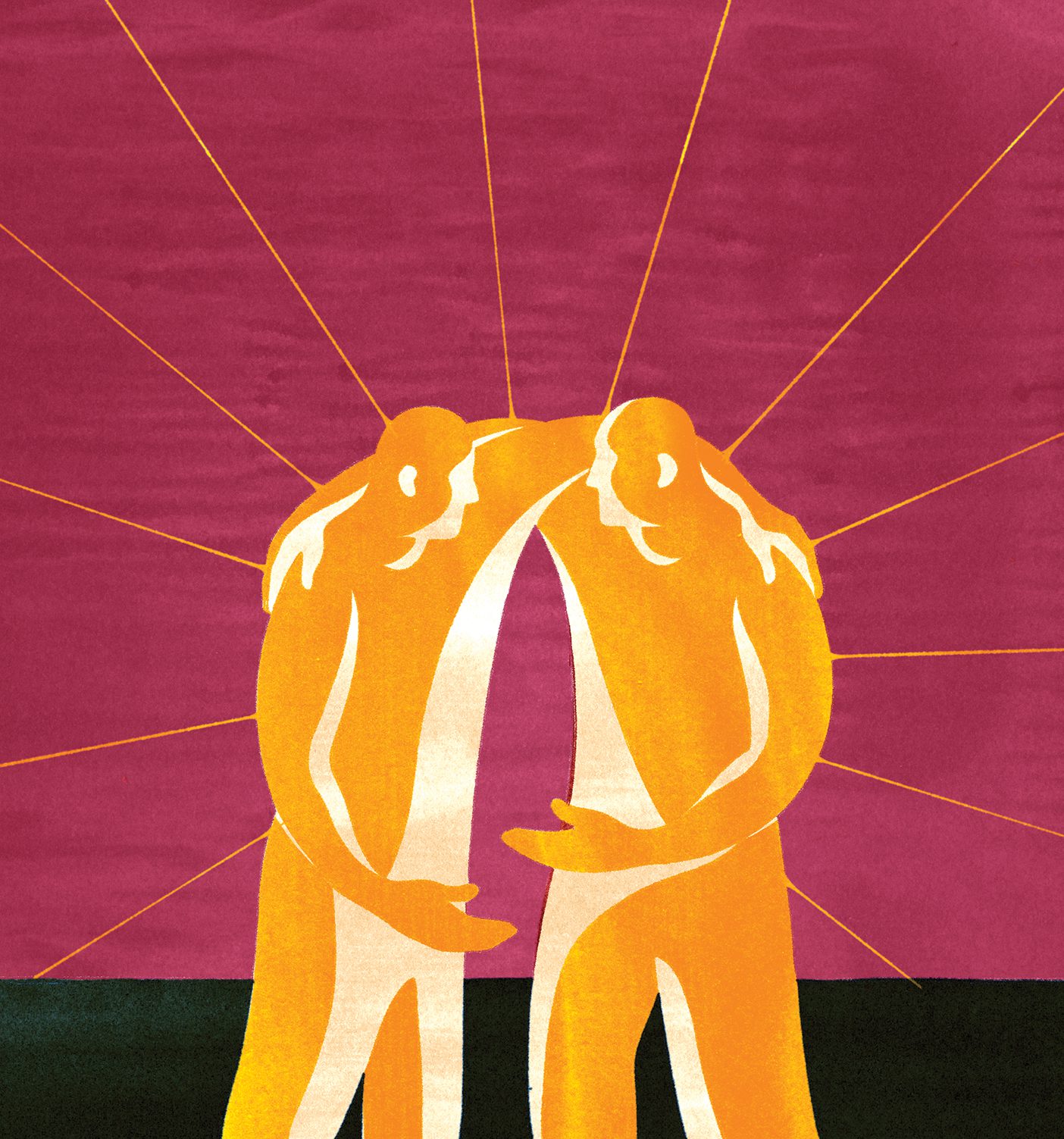
The fourth thing weavers have done that enables them to know others and be deeply known is learn to use their suffering well. We all have moments of suffering, but we can either be broken by those moments or we can be broken open by them. Some people are broken. They build a fragile shell and they curl in. They are afraid to be touched. They just shell, over the part of themselves that is hurting. Those people usually lash out in anger and resentment. There is a saying that pain that is not transformed gets transmitted.⁴
But other people get broken open. They get more and more vulnerable and more open. They live their life at a deeper level. The theologian Paul Tillich said that moments of suffering interrupt your life and remind you that you are not the person you thought you were. They carve through what you thought was the floor of the basement of your soul and reveal a cavity below and then carve through that and reveal another cavity below. You just see deeper into yourself than you ever knew existed, and you realize when you see into those depths that only spiritual and emotional food will fill those voids. So you begin to live life at a deeper level.⁵
One of the weavers we met in Ohio is a woman named Sarah Atkins. She had the worst thing happen to her that is possible to imagine. She was out antiquing with her mom. When she came home that Sunday evening, she expected to see her kids and her husband. She said, “I’m home. Mommy’s home.” There was no response. A mattress was covering the doorway leading to the basement. She thought they were playing hide-and-seek, so she rushed down. There she discovered her husband slumped over and her children dead. Her husband had killed their kids and himself.
Now she lives life in pure service. She helps women who have suffered from violence. She has a free pharmacy. She teaches at Ohio University. Her life is free openness and care. She has suffered unimaginably, and yet she lives with what Richard Rohr calls “a bright sadness.”⁶ She has seen the worst of the world, but there is a brightness and a humor about her, and there is agape—a selfless love that she gives out.
She told me, “I do it because I’m angry at him. Whatever he tried to do to me, he’s not going to do it. I’m going to make a difference in the world.” She is someone who lives her life openly, because whatever she had to lose, she has lost, and she has decided to be open through it all.
Building Community
When you look at these weavers and how good they are at it, you realize that deep-seeing is so difficult. And yet, if you look around, it happens all the time.
Great teachers have the ability to look and see into their students. Great friends have that ability, and great spouses have that ability. The connections that can happen between people are truly amazing. I had an acquaintance named Douglas Hofstadter who is an Indiana University cognitive scientist. He was on sabbatical with his wife, Carol, and their two kids, who were then ages 3 and 5, when Carol died suddenly. He kept a picture of Carol on the dresser in his bedroom every day, and he looked at it every day.
But one day he looked at it with special attention, and he wrote about what he sensed:
I looked at her face and I looked so deeply that I felt I was behind her eyes, and all at once I found myself saying, as tears flowed, “That’s me. That’s me.” And those simple words brought back many thoughts that I’d had before, about the fusion of our souls into one higher level entity, about the fact that at the core of both our souls lay our identical hopes and dreams for our children. About the notion that those hopes were not separate or distinct hopes, but were just one kind of hope. One clear thing that defined us both that wielded us into a unit, the kind of unit I’d but dimly imagined before being married and having children. I realized that though Carol had died, the core piece of her had not died at all and that it had lived on very determinately in my brain.⁷
The book he wrote is called I Am a Strange Loop. His argument is that, as human beings, we are strange loops and our loops interpenetrate each other. This is the most local thing imaginable, the most particular and most relational thing imaginable. And yet a vast society—330 million—depends on hundreds and hundreds and millions of millions of these local connections. What does a nation have? It has some basic level of trust. It has some basic level of fraternity—some assumed common humanity.
To me, a community is a bunch of people looking after each other, seeing each other deeply, taking the time to really enter into a relationship with each other, to depend upon one another, to buttress each other’s stories, and to buttress each other’s behavior.
“Community is a bunch of people looking after each other, seeing each other deeply, taking the time to really enter into a relationship.”
Anne and I have a friend named Rod who lives in north Louisiana. His sister Ruthie died at a tragically young age. She was a schoolteacher, and everybody loved her in the town. She would do something for the town on Christmas Eve: she would go to the cemetery and put a lighted candle on every gravestone just to recognize the dead. She died just around Christmastime.
On Christmas Eve, Rod asked his mom, “Do you want to go to the cemetery tonight and do what Ruthie used to do? Put the candles up there?”
His mom said, “You know, I’ll do it in future years, but it would just wreck me. It’s just too soon.”
So they decided not to do it. As they drove across town to a family’s house, they happened to drive past the cemetery, and they saw that somebody else had put a candle on every gravestone. That is what happens in community—the behaviors, the norms, and the gifts get replicated and spread around by people who are deeply engaged and deeply seeing one another.
The end result of all this is a sort of joyfulness. You can be happy alone. You win a game, you get a promotion, you feel big about yourself. Happiness is the expansion of self. But joy is the merger of self. It happens when you forget where you end and something else begins, when you really are seeing deeply into each other.
This is something that seems apolitical—it is not about democracy; it is just simply seeing each other. Yet it seems to me that this is the glue that holds us all together. We are trying to do something that has never been done before, something that is phenomenally hard: we are trying to build the first mass multicultural democracy. We should give ourselves a little grace. It is a hard thing to do. But it only gets done if we take the time to look into each other’s eyes.
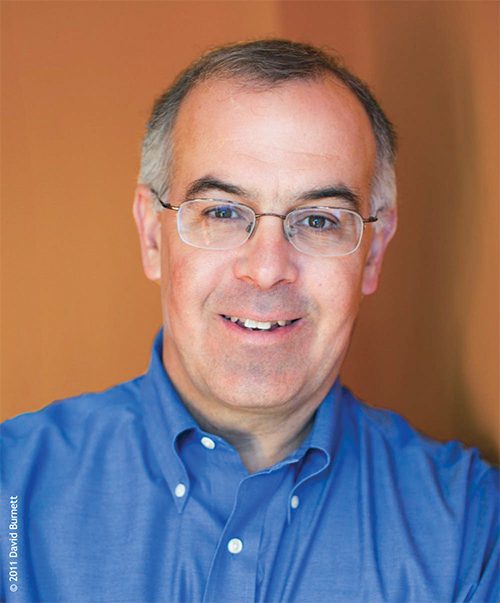
This is a condensed version of the BYU forum address that David Brooks, a political and cultural commentator and New York Times op-ed columnist, delivered on Oct. 22, 2019. Find the full address in print, audio, and video formats at speeches.byu.edu.
Send comments on this article to magazine@byu.edu.
NOTES
- John Ruskin, Modern Painters, vol. 3, part 4, Of Many Things (New York: John W. Lovell, 1885), chapter 16, “Of Modern Landscape,” paragraph 28, p. 286; emphasis in original.
- See David Brooks, The Road to Character (New York: Random House, 2015), p. 211; also pp. 186–212.
- See John Bowlby, A Secure Base: Parent-Child Attachment and Healthy Human Development (New York: Basic Books, 1988), p. 62.
- See Richard Rohr, Adam’s Return: The Five Promises of Male Initiation (New York: Crossroad, 2004), p. 37.
- See Paul Tillich, The Shaking of the Foundations (New York: Charles Scribner’s Sons, 1955), p. 56; also pp. 52–63, 161–62. See also Brooks, Road to Character, pp. 94, 206.
- Richard Rohr, Falling Upward: A Spirituality for the Two Halves of Life (San Francisco: Jossey-Bass, 2011), p. 117; see also pp. 118–25.
- Douglas Hofstadter, I Am a Strange Loop (New York: Basic Books, 2007), p. 228.


